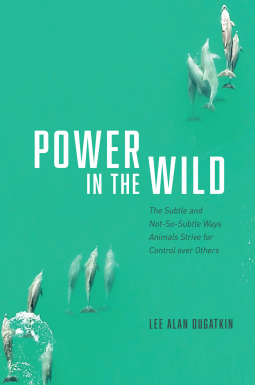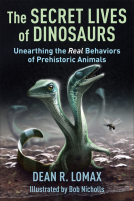
Power in the Wild
The Subtle and Not-So-Subtle Ways Animals Strive for Control over Others
by Lee Alan Dugatkin
This title was previously available on NetGalley and is now archived.
Send NetGalley books directly to your Kindle or Kindle app
1
To read on a Kindle or Kindle app, please add kindle@netgalley.com as an approved email address to receive files in your Amazon account. Click here for step-by-step instructions.
2
Also find your Kindle email address within your Amazon account, and enter it here.
Pub Date Apr 20 2022 | Archive Date Apr 01 2022
Talking about this book? Use #PowerintheWild #NetGalley. More hashtag tips!
Description
The quest for power in animals is so much richer, so much more nuanced than who wins what knock-down, drag-out fight. Indeed, power struggles among animals often look more like an opera than a boxing match. Tracing the path to power for over thirty different species on six continents, writer and behavioral ecologist Lee Alan Dugatkin takes us on a journey around the globe, shepherded by leading researchers who have discovered that in everything from hyenas to dolphins, bonobos to field mice, cichlid fish to cuttlefish, copperhead snakes to ravens, and meerkats to mongooses, power revolves around spying, deception, manipulation, forming and breaking up alliances, complex assessments of potential opponents, building social networks, and more. Power pervades every aspect of the social life of animals: what they eat, where they eat, where they live, whom they mate with, how many offspring they produce, whom they join forces with, and whom they work to depose. In some species, power can even change an animal’s sex. Nor are humans invulnerable to this magnificently intricate melodrama: Dugatkin’s tales of the researchers studying power in animals are full of unexpected pitfalls, twists and turns, serendipity, and the pure joy of scientific discovery.
Available Editions
| EDITION | Other Format |
| ISBN | 9780226815947 |
| PRICE | $25.00 (USD) |
| PAGES | 208 |
Average rating from 7 members
Readers who liked this book also liked:
Dean R. Lomax; Robert Nicholls
Nonfiction (Adult), Outdoors & Nature, Science
Maureen Johnson; Jay Cooper
Entertainment & Pop Culture, Mystery & Thrillers
Amelia Thomas
Biographies & Memoirs, Nonfiction (Adult), Outdoors & Nature
Ross Montgomery
General Fiction (Adult), Historical Fiction, Mystery & Thrillers
Denzil Meyrick
General Fiction (Adult), Historical Fiction, Mystery & Thrillers


















